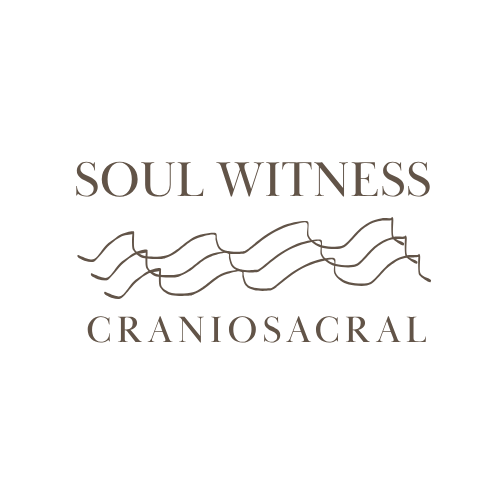Craniosacral Therapy (CST)
is a gentle, non-invasive bodywork technique that aims to improve the flow of cerebrospinal fluid and support the body’s natural healing processes.
Below are some of the most frequently asked questions about CST:
FAQs
-
Craniosacral Therapy is a form of bodywork that focuses on the craniosacral system, which includes the bones of the skull, spine, and sacrum, as well as the membranes and cerebrospinal fluid that protect the brain and spinal cord. Practitioners use gentle touch to assess and address imbalances or restrictions in this system.
-
CST is often used to address a variety of conditions, including:
Chronic Pain
Migraines and headaches
stress and tension-related disorders
neck and back pain
TMJ disorders
Sleep disturbances
PTSD and emotional trauma
Developmental and learning difficulties in children
Early attachment repair
Neonate attachment
Postpartum recovery
-
Yes, CST is generally considered safe for people of all ages, including infants and the elderly, as it uses light touch and non-invasive techniques. However, it is contraindicated in some cases. Please consult with a certified practitioner regarding contraindications.
-
During a session:
The client typically lies fully clothed on a treatment table.
The practitioner uses gentle hand placements to feel for restrictions or imbalances in the craniosacral rhythm.
The practitioner may apply light pressure to specific areas to help release tension and restore balance.
-
CST works by enhancing the function of the craniosacral system, allowing the body to self-correct and heal. The gentle touch encourages the release of tension in the fascia and soft tissues, improving fluid movement and nervous system function.
-
The number of sessions needed depends on the individual and their condition. Some people experience benefits after just one session, while others may require multiple sessions for more complex or chronic issues.
-
Most clients describe the experience as deeply relaxing and soothing. They may feel gentle movements, warmth, or a sense of release in different areas of the body.
-
While many people report positive results, scientific evidence for CST is still limited. Studies have shown promise in areas like pain relief and stress reduction, but more rigorous research is needed to fully validate its effectiveness.
-
CST is suitable for individuals of all ages, from newborns to seniors. It is often recommended for those seeking complementary approaches to health and wellness, particularly for conditions that involve chronic pain or stress.
-
Biodynamic Craniosacral Therapy (BCST) and Biomechanical Craniosacral Therapy are two approaches within the broader field of Craniosacral Therapy, but they differ significantly in philosophy, techniques, and focus.
The Key Differences between Biodynamic and Biomechanical Craniosacral Therapy
-
Biodynamic Craniosacral Therapy (BCST):
Emphasized the body’s innate intelligence and self-healing capacity.
Focuses on perceiving and supporting subtle rhythms or “tides” in the body, such as the “Breath of Life,” a concept referring to the inherent health within the system.
Views the practitioner as a facilitator rather than an active corrector, trusting the body to reorganize itself in its own way.
Biomechanical Craniosacral Therapy:
Based on a more structured, anatomy-focused approach.
Concentrates on assessing and correcting physical dysfunctions or restrictions within the craniosacral system, including the bones, fascia, and cerebrospinal fluid.
Practitioners use specific techniques to manually address imbalances or misalignments.
-
Biodynamic:
Relies on deep stillness and presence to support the body’s natural processes.
Minimal or no direct manipulation; the practitioner gently listens to the subtle expression of the body’s rhythms.
Techniques often involve sensing the “whole-body field” rather than targeting specific structures.
Biomechanical:
Uses light, hands-on techniques to address specific mechanical issues, such as misaligned cranial bones or restrictions in fascia.
Technique are often precise and anatomically guided, such as gently mobilizing sutures of the skull or releasing tension in the sacrum.
-
Biodynamic:
Holistic and systems-based, addressing the whole person (body, mind, and spirit).
Aims to restore the natural flow and balance of life forces rather than focusing solely on symptoms or physical structures.
May involve longer-term engagement with deep-seated patterns.
Biomechanical:
Problem-solving and structure focused, addressing specific issues such as headaches, back pain, or TMJ dysfunction.
Prioritizes resolving mechanical dysfunctions and improving physical alignment.
-
Biodynamic:
Acts as a neutral, non-directive presence, holding space for the client’s system to guide the healing process.
Relies on perceiving subtle phenomena rather than “fixing” issues.
Biomechanical:
Sessions may feel more physically focused, with noticeable adjustments or releases.
Clients might feel specific areas of tension being addressed directly. description
-
Biodynamic:
Sessions may feel more meditative and introspective, with a focus on deep relaxation and subtle sensations
Clients often report a sense of profound stillness or connection to their inner vitality.
Biomechanical:
Sessions may feel more physically focused, with noticeable adjustments or releases.
Clients might feel specific areas of tension being addressed directly.
-
Biodynamic:
Practitioners typically receive training emphasizing the philosophy of “holding space” and the subtle body-mind connection.
Training often includes a spiritual or energetic component.
Biomechanical:
Training is rooted in anatomy, physiology, and manual therapy techniques.
Practitioners are often healthcare professionals with a background in physical therapy, osteopathy, or massage therapy.


